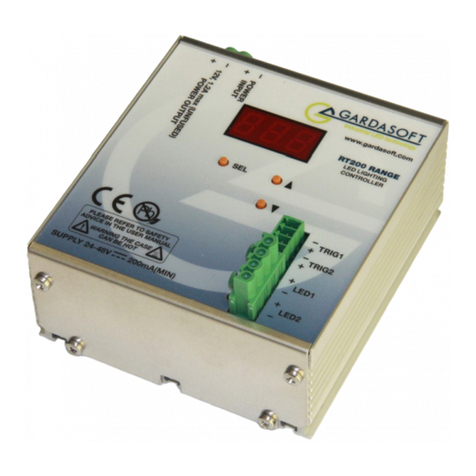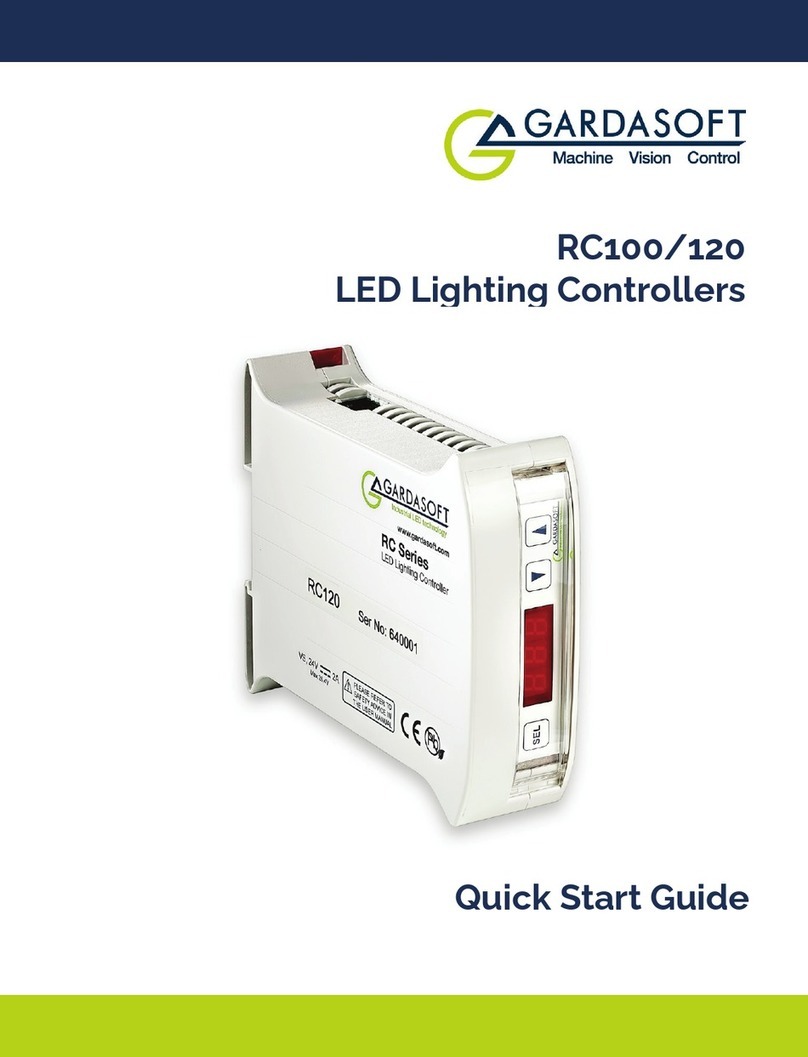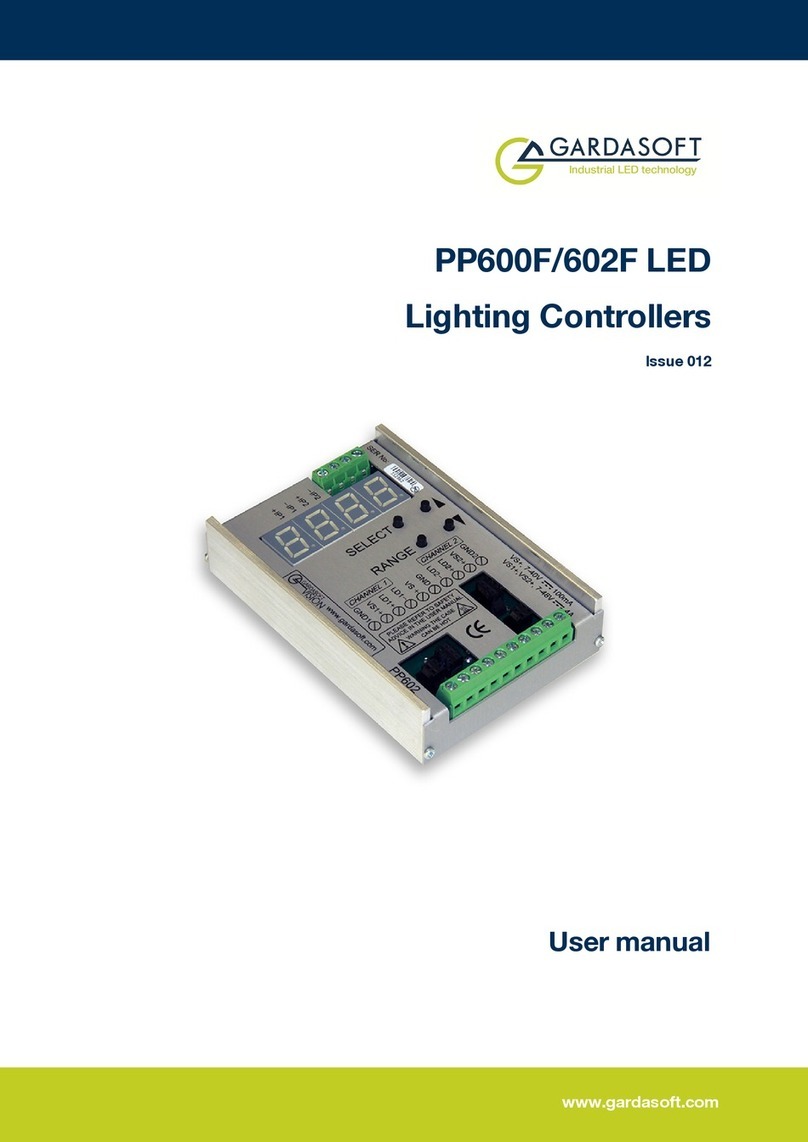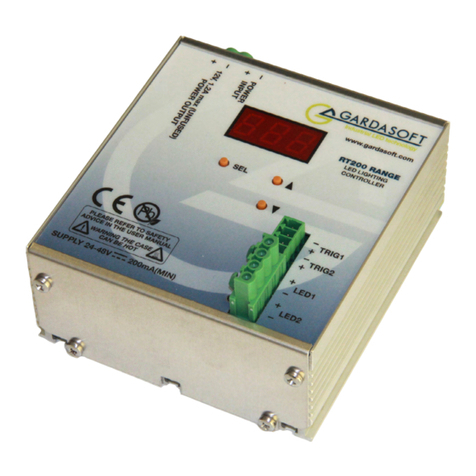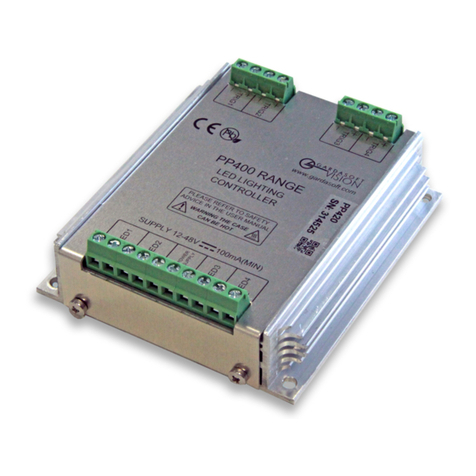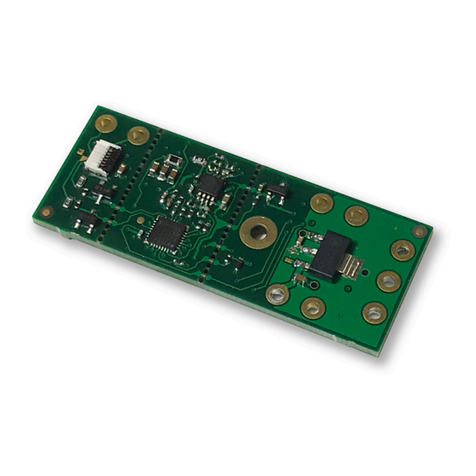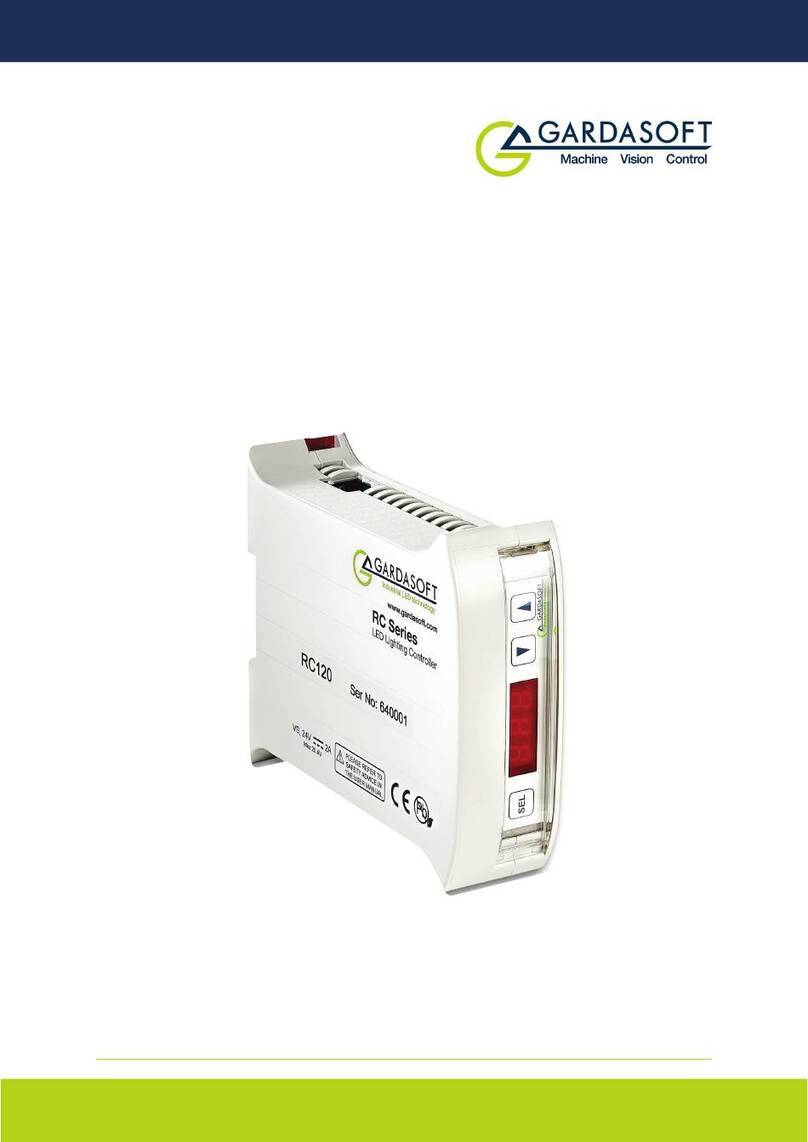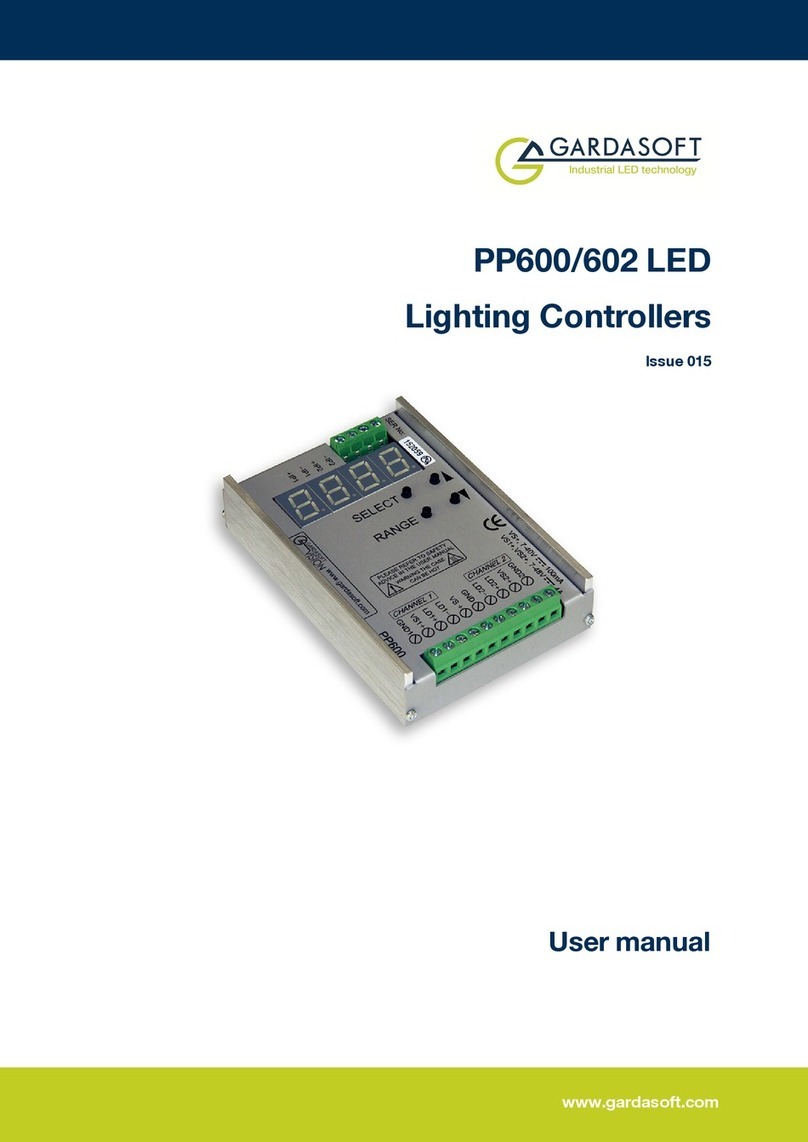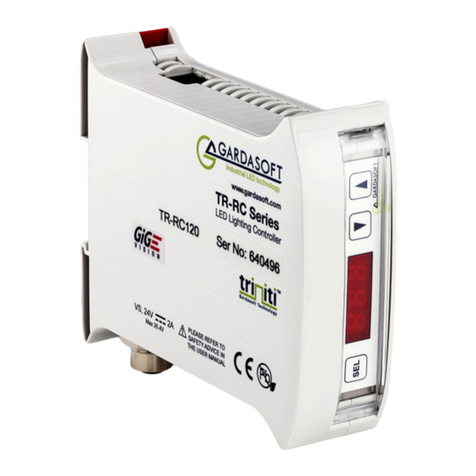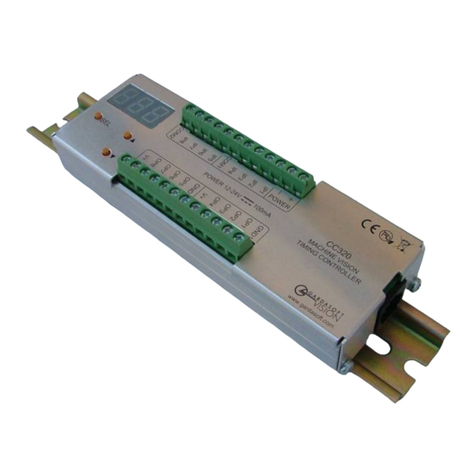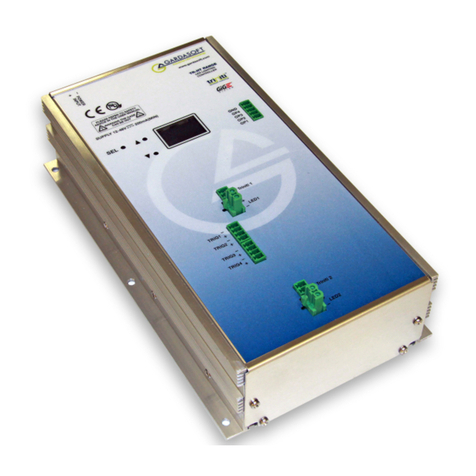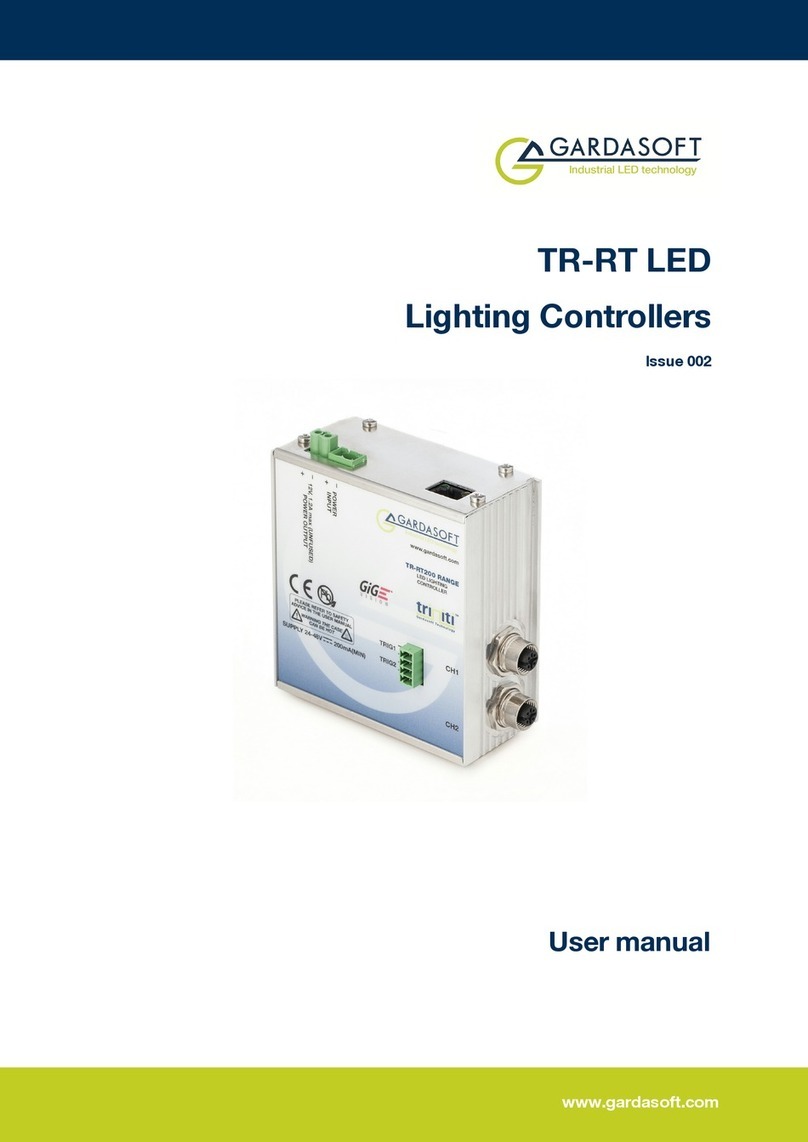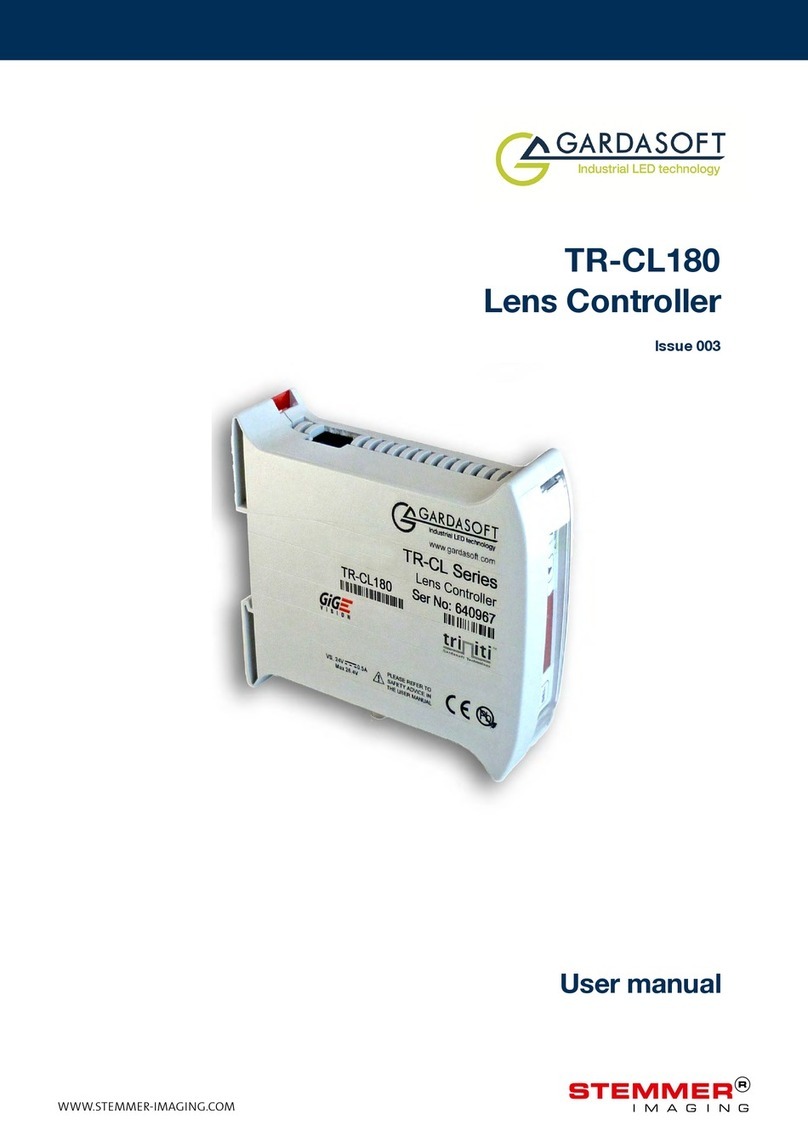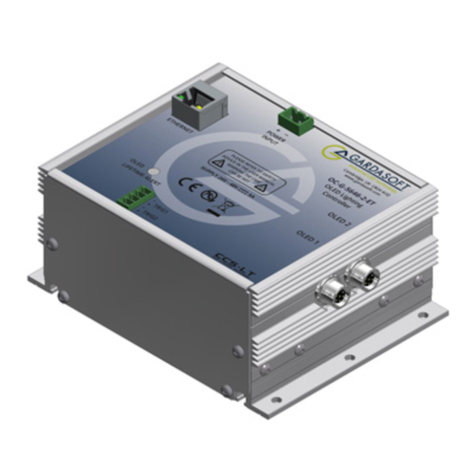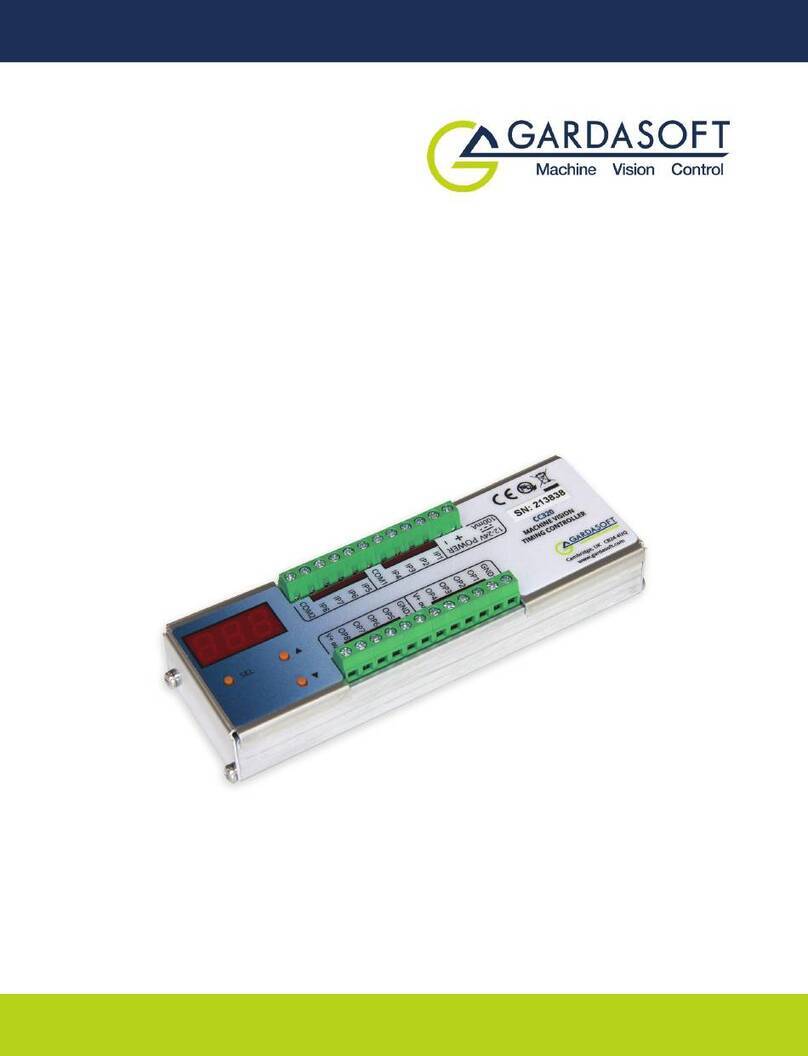
PP520 LEDlighting controllers - User Manual
getrennt sein und gegen Kurzschlüsse und Überlastungen geschützt sein.
Wir empfehlen die Verwendung eines Netzgeräts, das den
Ausgangsstrom durch konstruktive Maßnahmen, durch Einstellen der
Stromgrenze an der Versorgung (wenn möglich) oder durch einen
Überstromschutz auf den geeigneten Nennstrom der Steuerung
begrenzt. Das Netzgerät muss nach IEC 60950-1, IEC 60335-1, IEC
61010-1 oder IEC61558-1,-2,-16 zugelassen sein. Das Netzgerät kann
auch nach gleichwertigen oder höheren Standards zugelassen sein.
Alle stromführenden Leiter, die vom Stromnetz abgeleitet sind, müssen
ebenfalls Sicherheitskleinspannung (SELV) am Ausgang erzeugen.
Hinweise zu den zulässigen Spannungsgrenzwerten finden Sie im Section
13, Reference information.
Bei den maximalen Grenzwerten kann die Temperatur des Gehäuses
75°C überschreiten. Daher muss entweder die gesamte Verkabelung für
mindestens 100°C bemessen sein oder die gesamte Verkabelung muss
zusätzlich mit einer angemessen dimensionierten wärmebeständigen
Tülle isoliert sein oder gegen Kontakt mit dem Metallgehäuse der Steue-
rung oder deren Kühlkörper, sofern angebracht, geschützt sein.
Die Verkabelung der Stromversorgung zur Steuerung muss für min-
destens 4A bemessen sein.
Die Verkabelung vom Kanalausgang zur Last muss höher als der maxi-
male Kanalausgangsstrom dimensioniert sein.
Wenn die Steuerung falsch eingerichtet ist oder im Fall eines Fehlers, kann
es vorkommen, dass die von der Stromversorgung an die Steuerung abge-
gebene Energie direkt mit einem oder allen Ausgangskanälen verbunden
wird. Sie müssen dies bei der Installation berücksichtigen und gege-
benenfalls für einen geeigneten Schutz sorgen.
Die Gleichstromversorgung der Steuerung muss extern durch eine träge
Sicherung (T4AH, 50V) bis 4A gesichert sein.
Der Installationstechniker muss einen deutlich gekennzeichneten, leicht
zugänglichen Schalter als Teil der Installation in der Nähe vorsehen, mit
dem die Steuerung an beiden Stromleitern von ihrer Stromquelle getrennt
werden kann.
Durch induktive Lasten verursachte Einschaltstöße zum PP520 müssen
extern unterdrückt werden.
Warnung: Es handelt sich hierbei um ein Produkt der Klasse A. Die
Verwendung in Wohngebieten kann zu Funkstörungen führen und eine
solche Verwendung sollte vermieden werden, es sei denn besondere
Maßnahmen werden vom Anwender ergriffen, um die Emissionen auf ein
Niveau zu begrenzen, das den Empfang von Rundfunkübertragungen
ermöglicht.
—9—
